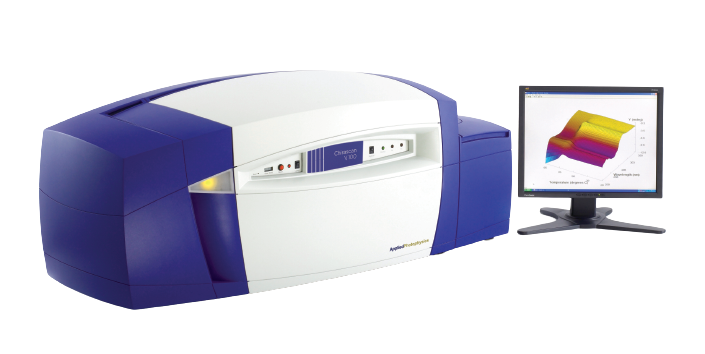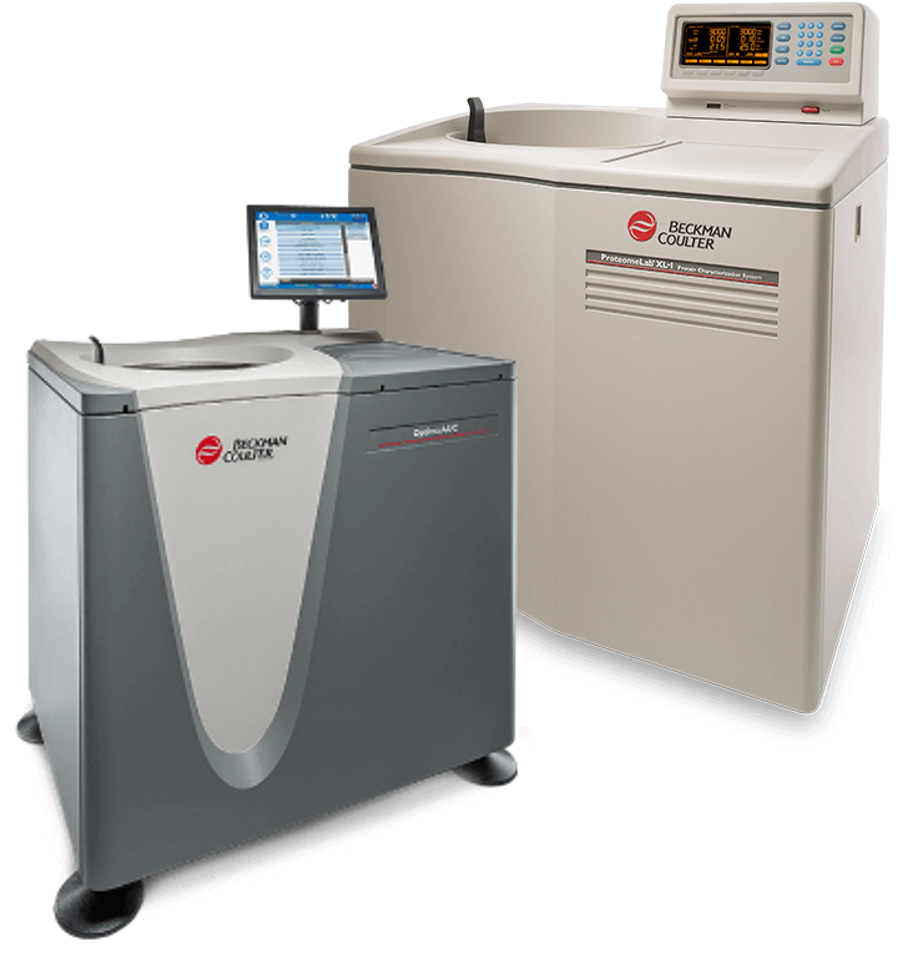
Charakterizace
Sample characterization is crucial part of research which shloud not be negglected.
The basic characteristics of the protein sample (identity, purity, homogeneity, stability) should always be checked before the subsequent interaction or structural analysis in order to minimize the irreproducibility of results and to improve the quality of the experiments. The combination of various methods allows for detailed analysis of the sample in a short time and spares precious resources of the subsequent high-end techniques.
Information about secondary structure can be obtained from circular dichroism measurement (proper folding determination).
Homogeneity can be determined through the use of dynamic light scattering (robust determination of hydronamic radious of particles), size exclusion chromatography (mass determination and purity of samples) and analytical ultracentrifugation (particle size and homogeneity of sample).
Thermal stability can be studied using differential scanning calorimetry (high throughput set-up), differential scanning fluorimetry (intrinsic fluorescence) or circular dichroism (disruption of secondary structure). Stability can be improved by changing the buffer composition - there is a buffer screen available on site. Users can utilize the high throughput machines to test all 96 conditions in one set-up.
Purity of samples can be checked by analytical ultracentrifugation or size exclusion chromatography.


Mass Photometry: TwoMP with MassFluidix
Mass photometry is a cutting-edge analytical technique that allows researchers to measure the mass of individual molecules in solution without requiring labels or extensive sample preparation. Our TwoMP instrument is available also with the lastest inovation - the MassFluidix High Concentration microfluidic system - which enables measurement of low-affinity biomolecular interactions through rapid dilution.
Small angle X-ray scattering: SAXS
Rigaku's BioSAXS-2000 SAXS camera is designed specifically to meet the needs of the structural biologist. In standard experiment, the intensity of scattered X-rays is recorded from biological sample in solution. SAXS is used for determination of the integral structural parameters, shape reconstruction, determination of the oligomeric state in solution, unraveling the quaternary structure of protein complexes, modeling of molecular flexibility and more. The BioSAXS AUTO configuration incorporates an Automatic Sample Changer for unattended overnight operation.
Cirkulární dichroismus: Chiroscan V100
CD spektrometr Chiroscan V100 je schopen měřit cirkulární dichroismus, fluorescenci, totální fluorescenci, lineární dichroismus, magnetický dichroismus, optickou rotační disperzi a rovněž cirkulární dichroismus, fluorescenci.
Analytical ultracentrifugation: ProteomeLab XL-I and Optima
Beckman Coulter ProteomeLab XL-I analytical ultracentrifuge is equipped with absorbance (wavelength range 190 – 800 nm) and interference optics and can be used for both sedimentation velocity and sedimentation equilibrium experiments. Analytical ultracentrifugation is applicable for proteins, nucleic acids, lipids, polysaccharides, viruses and nanoparticles. It has a broad applicability including determination of sample homogeneity, oligomeric state of proteins (or molecular weight, respectively) and can be used to assess aggregation of sample and to study biomolecular interactions of self- and hetero-association systems (determination of stoichiometry and affinity).
PROFILE CARD (OPTIMA) PROFILE CARD (PROTEOMELAB) SERVICE MODE

Kalorimetrie: Auto PEAQ-DSC
PEAQ-DSC je diferenciální skenovací mikrokalorimetr, jehož vzorkové kapiláry mají objem <200 µl. Technika DSC je založena na měření rozdílu tepelných změn doprovázejících kontrolované zahřívání nebo ochlazování vzorku (bio)molekuly a odpovídajícího referenčního roztoku. Automatizovaná verze přístroje PEAQ-DSC umožňuje měření až 282 vzorků v řadě.
VP-DSC is a differential scanning microcalorimeter with 500 µl volume of sample cell for manual filling. DSC technique measures heat changes that occur in the (bio)molecular sample solution during a controlled increase or decrease in temperature, on the basis of a temperature difference between the sample and the reference material.
Differential scanning fluorimetry: Prometheus NT.48
Prometheus precisely characterizes thermal unfolding, chemical denaturation and aggregation in a single run within broad temperature range (15 - 110 °C). It is possible to measure up 48 samples in one run.
Analytical size-exclusion chromatography coupled to an array of detectors including UV-VIS spectrometer, refractometer, viscometer and static light scattering (RALS/LALS). Suitable for analysis of sample purity, oligomeric state of proteins, study of complexes and other experiments.
Dynamický rozptyl světla: Xtal SpectroLight 600
Dynamický rozptyl světla (dynamic light scattering) se používá pro analýzu proteinových roztoků, agregátů, inhibitorů, pufrů, nanočástic, polymerů či jiných látek v roztoku. SpectroLight 600 provádí měření v submikrolitrových kapkách v destičkách. To znamená malou spotřebu vzorku a umožňuje také např. přímé měření vzorku v krystalizační kapce.
Dynamic (static) light scattering: DelsaMax Core
Dynamic light scattering is used for the analysis of protein solutions, aggregates, promiscuous inhibitors, buffers, nanoparticles, polymers or other products in solution. DLS system measures the polydispersity of the sample and hydrodynamic radii (size) of the particles within range of 0.4 to 5,000 nm. This is particularly beneficial in sample characterization prior to crystallization or other experiments.
UV-VIS spectrophotometer: Biospectrometer kinetic
Spectrophotometer allows measurement of samples in range of 200-830 nm. Can be used to determine protein or nucleic acid concentration, purity and also to measure basic enzyme kinetics.

















